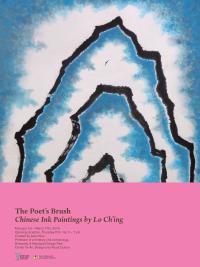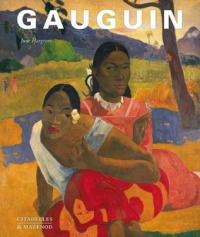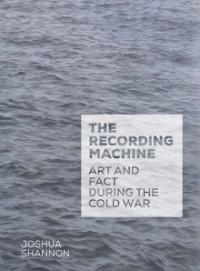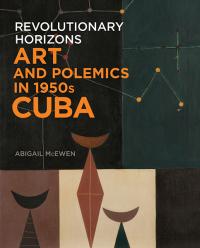Prof. Abby McEwen awarded Inaugural Do Good Campus Fund Grant
The $25,000 grant will focus on providing students opportunities to "understand the process of commissioning and installing public art."


Research in art history and archaeology is an interdisciplinary enterprise.
Engaging diverse theoretical frameworks and research methods, our faculty produce innovative scholarship in the form of books and articles, digital projects, museum exhibitions, public lectures and more. Our faculty lead national networks and conferences (including the Archaeological Institute of America and the College Art Association), providing innovative research frameworks and making significant contributions to UMD's research enterprise.
Consolidated ARTH Statement of Commitment to Diversity, Equity and Inclusion
(Prepared by the DEI Task Force and Approved by GAHA May 2022)
We, the members of the Department of Art History and Archaeology at the University of Maryland, affirm that Black lives matter and condemn the ongoing violence of systemic racism, xenophobia, homophobia, transphobia, and other acts of injustice and harm impacting BIPOC and other marginalized people. We recognize and are willing to confront the roles of Art History and Archaeology in elevating and perpetuating Eurocentrism and its attendant systems of oppression including colonization, exploitation of labor, exploitation of the nonhuman world, sexism, classism, and white supremacy inside and outside academia. We recognize that this list is not all-inclusive and is ever evolving, and to it more will be added. Continuing the work begun by graduate students, faculty, and staff in the summer of 2020 following the murder of George Floyd by police, we commit to building and maintaining a more inclusive, equitable, anti-racist and pluralistic department. As part of this commitment, we recognize the need to confront and redress bias and harm and to challenge monocultural norms and expectations.
In this process, we are inspired by and join the campus-wide efforts to reckon with the University of Maryland’s long record of discrimination, racial injustice, and actions that undermine the very principles of intellectual and moral integrity for which we stand.
We are committed to lifting up and expanding the diversity of our department community and to improving inclusivity and equity in our departmental practices, policies, and culture. In the study and practice of art history and archaeology, diversity and differences are assets. Our department affirms that diversity is expressed in myriad forms, including race, ethnicity, sex, gender, sexual orientation, class, immigration status, body type, language, culture, national origin, religion, age, ability, and political perspective. We are made stronger by inviting in and providing for the diverse voices, approaches and contributions that form the foundation of our twinned disciplines, and which enable our community, as a whole, to thrive. While our disciplines have collaborated in structures of oppression, we wish to affirm the role that we in the humanities and in art history and archaeology can play in helping to envision and make possible a world that is both sustainable and just.
We envision our department as a space of care, safety, and respect for all of our members. All of our voices are valuable and our actions matter. We commit to upholding this vision in our work together.


While mapping his biography from his childhood in Peru to his death in the Marquesas Islands, Paul Gauguin (1848-1903) examines his artistic development through the style and content of specific works at the intersection of his personal experiences and spiritual transformation. As it tracks the evolution of his career from a self-taught Sunday painter to a seminal force shaping the direction of modern art, it explores how his unorthodox approach to materials and techniques stimulated his radical innovations—mutually reinforced by his experiments as painter, sculptor, ceramist, draftsman, printmaker, and author.

Professor Shannon's 2017 book, The Recording Machine: Art and Fact During the Cold War (Yale University Press) offers a new understanding of the transformation of the visual arts around 1968. Uncovering a stringent realism in the period's art, this book traces many artists' rejection of essential truths in favor of mere facts and surface appearances. Dubbing this tendency factualism, Shannon illuminates its relationship to the Cold War's preoccupation with data as well as the longer rise of a pervasive culture of fact. The book focuses on the United States and West Germany, closely reading works ranging from conceptual photography and earthworks to photorealist painting and abstraction. The Recording Machine is the winner of a Terra Foundation for American Art International Publication Grant.
Read More about The Recording Machine: Art and Fact During the Cold War
The significance of the sculptural decoration of the Athenian Treasury at Delphi has long been debated. This article demonstrates that the sculptural program is not only an early example of a newfound emphasis on Theseus as the particular hero of Athens, but that it is indicative of an effort to create visual parity between the deeds of Theseus and those of Herakles. The Athenian Treasury is, therefore, the first building to use mythic imagery involving Theseus, Herakles, and their battles against the Amazons as a sophisticated allusion to conflict with Persia and to the decisive role of Athens at the Battle of Marathon in 490 BCE. The mythological themes elaborated in the treasury's decoration ingeniously predicate ancient parallels for contemporary events. My reevaluation of the Athenian Treasury's decoration invites us to reassess the intersections between art, life, and myth in the aftermath of momentous world events like Marathon.
How have Blacks been understood in Japan and represented in Japanese art? What role did the representation of Blacks perform in the construction of Japan’s own racialized identity vis-a-vis both blackness and whiteness? How did the Japanese artistic diaspora in the United States, as part of an Asian minority subject to discrimination—including Japanese and Japanese-Amerian incarceration during World War II—approach the subject? Covering a period of approximately two hundred years, from the early 19th century to the early 21st century, this essay is the first study of its kind and provides a basis for the consideration of the racialized nature of Japanese art and modern art more generally.
Read More about “The Image of the Black in Japanese Art, 19th Century to the Present”

Read More about Revolutionary Horizons: Art and Polemics in 1950s Cuba

As one of the most widely reproduced sculptures of the nineteenth century,
Hiram Powers's Greek Slave was a landmark statue defined in relation to its own reproduction.
This article considers how the popularity of The Greek Slave at exhibition turned the statue into
a ubiquitous subject for a wide range of reproductive media including prints, calotypes,
daguerreotypes, stereoviews, statuettes, and even textiles. It explores these reproductive
representations as sites of sculptural display that shaped the experience of the statue for vast
and varied audiences and as self-reflexive and interpretative responses to the dissemination of
a shackled nude across the transatlantic Victorian world.
Read More (URL): https://www.19thc-artworldwide.org/summer16/korobkin-on-the-greek-
slave-and-materialities-of-reproduction
Read More about The Greek Slave and Materialities of Reproduction